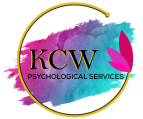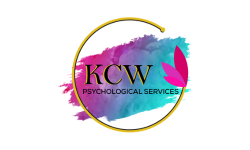Healing Through Creativity:
The Transformative Power of Art Therapy
The Essence of Art Therapy: A Journey to Mental Wellness
Defining Art Therapy: More Than Meets the Eye
Art therapy is a remarkable discipline that extends far beyond the simple act of creating art. It is a dynamic and multifaceted approach to mental health and personal growth, rooted in the belief that the creative process can serve as a powerful catalyst for healing and self-discovery. Unlike traditional talk therapy, art therapy harnesses the innate human desire to express oneself through visual, tactile, and kinesthetic means, providing individuals with a unique avenue to access and process their thoughts, emotions, and life experiences.
The Science Behind the Canvas: How Art Influences the Brain
Recent advancements in neuroscience have shed fascinating light on the profound impact of art on the human brain. Studies have shown that engaging in creative activities can stimulate the release of neurotransmitters like dopamine and serotonin, which play a crucial role in regulating mood and reducing stress. Moreover, the act of creating art has been linked to increased activity in the prefrontal cortex, the region responsible for decision-making, problem-solving, and emotional regulation. By tapping into the brain’s natural affinity for artistic expression, art therapy empowers individuals to navigate complex emotional landscapes, confront personal challenges, and cultivate a deeper understanding of themselves. Whether it’s painting, sculpting, or engaging in other creative modalities, the therapeutic process allows participants to externalize their internal experiences, fostering self-reflection, emotional processing, and a heightened sense of well-being.
Art Therapy in Action: Techniques and Modalities
The Brushstroke of Emotions: Exploring Art Therapy Techniques
Painting and Drawing: Unleashing Inner Thoughts
The act of putting paint to canvas or pencil to paper can be a profoundly cathartic experience for individuals engaged in art therapy. Through the freedom of self-expression, participants are empowered to externalize their innermost thoughts, feelings, and experiences, often uncovering hidden narratives and unlocking new avenues for self-understanding.
Sculpture: Molding Emotions into Forms
Working with clay, wood, or other malleable materials can provide a tangible and three-dimensional outlet for the exploration of one’s emotional landscape. The process of sculpting allows individuals to physically shape and transform their inner experiences, fostering a sense of agency and control over the manifestation of their psychological states.
Creative Expressions: Art Therapy Across Different Age Groups
Children and Adolescents: Building Confidence Through Creativity
For younger individuals grappling with various challenges, art therapy can be a transformative tool for self-expression, emotional regulation, and the development of confidence and resilience. Through playful and imaginative activities, children and adolescents can navigate complex feelings, build social skills, and cultivate a greater sense of self-worth.
Adults and Elders: Rediscovering Self Through Art
Art therapy can also be profoundly impactful for adults and older individuals, providing a means to process life transitions, confront personal traumas, and rediscover forgotten aspects of their identity. By tapping into the creative wellspring, participants can unlock new perspectives, foster personal growth, and find solace in the therapeutic journey.
Real-life Transformations: Success Stories of Art Therapy
From Shadows to Light: Personal Journeys of Healing
The power of art therapy is perhaps best exemplified by the remarkable personal stories of those who have experienced its transformative effects. Individuals from all walks of life have found solace, clarity, and a renewed sense of purpose through the creative process, shedding the burdens of their past and embracing a future filled with hope and possibility.
Art Therapy in Clinical Settings: A Therapist’s Perspective
Witnessing the profound impact of art therapy firsthand, mental health professionals have championed its integration into clinical settings, recognizing its unique ability to complement traditional treatment modalities and empower clients to achieve lasting change. Through the unique lens of the therapist, we gain invaluable insights into the nuances, challenges, and triumphs that unfold within the art therapy space.
Starting Your Artistic Healing Journey
Finding Your Creative Outlet: Tips for Beginners
Embarking on an art therapy journey can be an exhilarating and transformative experience, but it’s understandable for beginners to feel hesitant or unsure about where to start. The key is to approach the creative process with an open mind, a willingness to experiment, and a sense of self-compassion. Explore a variety of mediums – from painting and drawing to sculpting and collage – and don’t be afraid to try new things. The act of engaging in the creative process, rather than the final product, is what matters most. Embrace the journey of self-discovery, allowing your intuition to guide you and letting go of any preconceived notions of what “good art” should look like.
Remember, art therapy is not about technical mastery or artistic talent; it’s about using creative expression as a tool for personal growth and emotional healing. Be patient with yourself, celebrate small victories, and don’t hesitate to seek guidance from qualified art therapists or join supportive communities that can offer encouragement and inspiration along the way.

